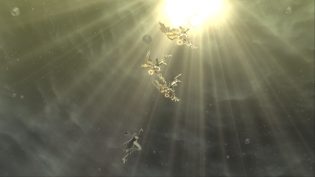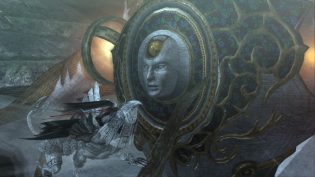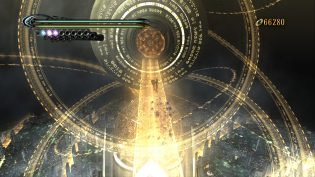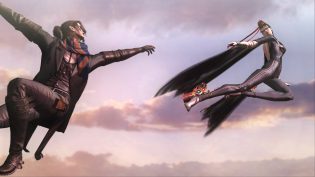My O tempora posts tend to be about older titles, than 2009, the year Bayonetta was released originally in Japan. But Bayonetta became a milestone release, a new classic that ushered a new era of “stylish action” games and gave the Capcom alumni at PlatinumGames a much needed boost, despite the lower than expected sales. In addition, the core gameplay has been evolved and perfected so much since then it’s interesting to look back at where it started. But now on PC, with a surprisingly solid port.
I never did a proper review of the game back when it was released, as my friend DiodorOFF did the proper review on AveGamers! (website we ran back then). But I did the “alternative take” post which was, actually, the first concept that turned into “Klardendum” – Klarden’s addendum to something (now it also references DumDoi, of course). And re-reading it today, I find myself criticizing the same things about the game that I hated back then.
But for the good stuff first. Bayonetta reinvigorated the “stylish action”, that focuses on tight action and controls, that was started by Onimusha and Devil May Cry games almost 10 years prior to that. To the point, where Bayonetta felt like Hideki Kamiya just making a proper sequel to his DMC, while just acknowledging the improvements of later games. The game changer for the genre, of course, was the Witch Time – incredibly gratifying to pull of perfect dodge of the enemy attack, that triggered the slow motion, that also made your attacks more powerful. This mechanic added something powerful to the bullet time we had since Max Payne days, turning it from a super power you can use at any point, into a trickier move that felt like a perfect risk-reward mechanic example. And still does – playing the game on higher resolutions with high frame rates on PC, seeing all the stylish action on screen and knowing that you are the one making it all look so good, even when you make mistakes, is just incredible.
But then we get to the things that weren’t good even back then. Controls on the gamepad, for example, are still non-rebindable, even though the keyboard controls are. And my right hand, as it did back in 2010, hurt a lot from using the outer gamepad buttons (B and Y), instead of inner ones (X and Y) – something that later Platinum titles changed. The sudden motorcycle and shmup bits are still quite jarring, if you’re not into those arcade types of games, and I’m not, and shmup even has inverted controls that cannot be changed. Camera can be a problem. Difficulty still ramps up unexpectedly at some points, although I was happy to find that this time I killed the final boss on Normal in one try and even managed to get a Gold rank, something that I had to lower my difficulty for 7 year ago. Difficulty in general is just higher on Normal than it is in later PlatinumGames’ titles and it feels.
Platforming bits can be a pain and the game, now more than back then, and with me having watched the full Hideki Kamya’s commentary I can see so much more plain how many budget cutting decisions were made. Game reuses the same parts, has you fight two separate bosses in the same location and constantly drags out the length with rather copy and pasted parts. Not that it’s not fun to play, it sure is, but it’s so much more obvious to me now. At least the videos also helped make sense of the messy story, that was really confusing the first time around. Not because it was particularly complicated, but because it was just “stuff” happening after a set amount of gameplay that seemingly made no sense, but actually did.
Is Bayonetta as good now, after we got so many good (and some bad) titles from Platinum, most recently the fantastic NieR: Automata? Oh yeah, definitely. Has it aged as well as I would’ve hoped? Sadly, no. And the PC port is the best representation of what the game was back then, without any attempts to fix any of the game issues. Which is quite fine, honestly. Because even like that Bayonetta is a lot of fun.







